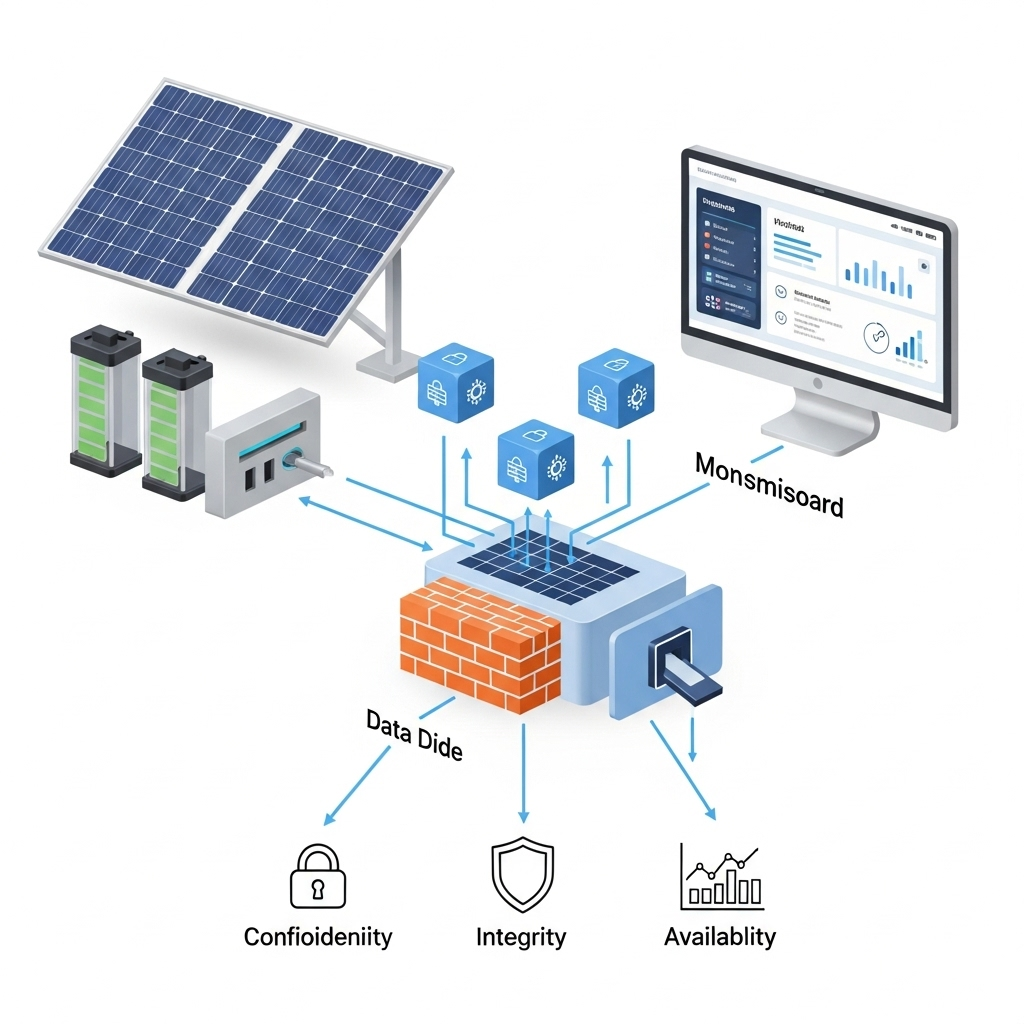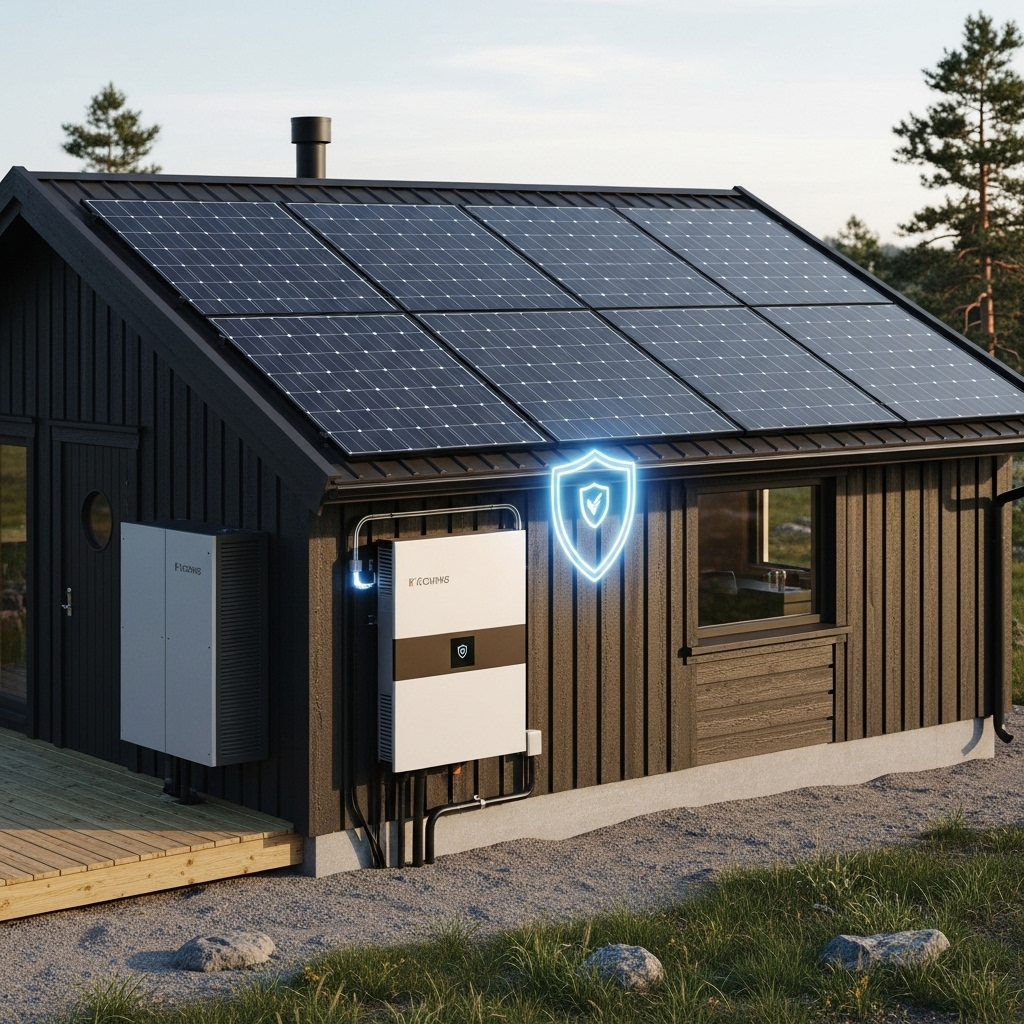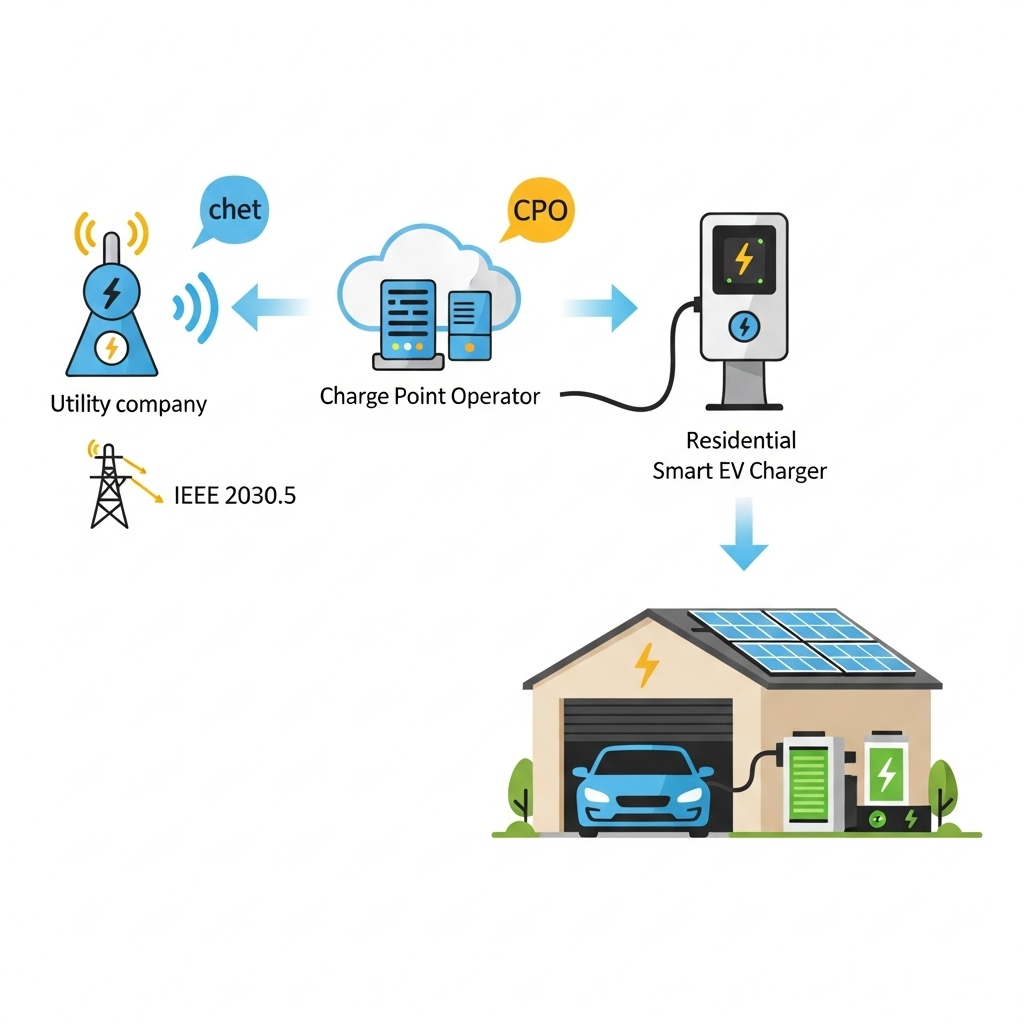As solar inverters and energy storage systems (ESS) become smarter and more connected, they offer unprecedented control and monitoring capabilities. This connectivity, however, opens new pathways for potential cyber threats. Securing the telemetry data—the remote measurement and reporting of information—is no longer optional. It is fundamental to the safety, reliability, and performance of your energy assets. A layered security approach, built on deliberate protocol choices, is your strongest defense.
Understanding the Core Principles of Cybersecurity
Before selecting specific protocols, it's helpful to grasp the foundational goals of information security. These are often summarized by the 'CIA Triad,' a model that focuses on three key attributes of information.
Confidentiality, Integrity, and Availability (CIA)
According to a report by the International Renewable Energy Agency (IRENA) on grid codes, information security is built upon these three pillars. Confidentiality ensures that data is accessible only to authorized parties. Integrity guarantees that information is not altered during storage or transmission. Availability ensures that authorized users can access the data when needed. Any robust security strategy for inverter and ESS telemetry must address all three aspects to be effective.
The Evolving Threat Landscape
The increasing use of internet-based communication for power system operation makes cybersecurity a critical factor for electricity supply security. As your energy system communicates over networks, it requires strong protective measures. The programmability of modern inverter-based resources offers great flexibility but also depends heavily on secure software to prevent unauthorized access and malicious interference.
Key Protocols for Authentication and Encryption
Authentication and encryption form the first line of defense, ensuring that only trusted entities can communicate and that the data they exchange remains private.
1. Robust Authentication Mechanisms
Authentication verifies the identity of every user, device, or system attempting to access your network. This is not just about a simple username and password. Modern systems should enforce a 'least-privilege' rule, where each entity has only the minimum access rights necessary for its function. This minimizes potential damage if an account or device is compromised.
2. Transport Layer Security (TLS)
TLS is a cornerstone of secure communication. It provides three critical functions: encryption, authentication, and data integrity. By implementing TLS, you protect telemetry data against common attacks like eavesdropping (spying on data), man-in-the-middle attacks (where an attacker secretly intercepts and alters communication), and replay attacks (where an attacker re-transmits valid data to trick the system). The U.S. Department of Energy highlights TLS as a key functionality for securing grid-edge devices.
3. Certificate Management and Revocation
Digital certificates are the backbone of TLS, acting as electronic passports to verify identity. A proper protocol includes managing these certificates throughout their lifecycle. This involves using Certificate Revocation Lists (CRLs) to immediately invalidate any certificates that are expired or compromised. This simple step is a powerful defense against data spoofing, where an attacker fakes a trusted identity.
Protocols for Data and System Integrity
Beyond securing the communication channel, you must also ensure the integrity of the system itself and the data it generates.
4. Secure Firmware Updates and Rollbacks
Firmware updates are necessary to add features and patch vulnerabilities, but the update process itself can be an attack vector. A secure protocol ensures that firmware is digitally signed by the manufacturer and verified by the device before installation. Furthermore, as noted in the IRENA grid code analysis, the ability to perform 'rollbacks' to a previous, stable firmware version is crucial for recovering from a malicious or faulty update.
5. Comprehensive Logging and Monitoring
You cannot protect against what you cannot see. A rigorous logging protocol records all significant events on a system, from user logins to configuration changes. These logs are invaluable for detecting suspicious activity, performing forensic analysis after an incident, and troubleshooting operational issues. Effective monitoring also helps you track key operational data. To maximize your system's output, it's vital to understand what these metrics mean for its health. A deeper look into solar storage performance can provide crucial context on metrics like C-rate and Depth of Discharge.
6. Strong Password Management
While it may seem basic, weak or default passwords remain a common entry point for attackers. A strong protocol enforces complexity requirements, mandates regular changes, and prohibits the use of factory-default credentials. This simple discipline can thwart many brute-force attacks, where an attacker systematically tries to guess passwords.
Advanced and Physical Security Layers
For the highest level of security, advanced network architecture and physical protection are necessary components.
7. Network Segmentation and Data Diodes
Network segmentation involves dividing a network into smaller, isolated sub-networks to limit the spread of an attack. A more advanced tool is a data diode. A U.S. Department of Energy success story highlights how these hardware devices permit data to flow in only one direction. This physically blocks any inbound cyberattacks while still allowing real-time monitoring data to be sent out from the inverter or ESS.
8. Standardized Communication Protocols
Using proprietary, undocumented protocols can introduce unknown vulnerabilities. Adhering to established, well-vetted industry standards like IEC 60870-5-104 or EEBUS provides a higher degree of confidence. These standards have been developed with security and interoperability in mind, benefiting from the scrutiny of a wide community of experts.
9. Physical Hardware Security
Cybersecurity extends to the physical world. Your protocol list must include measures to protect hardware from unauthorized physical access and tampering. This includes placing equipment in secure enclosures, using tamper-evident seals, and controlling access to the physical location of your inverter and ESS.
| Protocol Choice | Primary Function | Threats Mitigated |
|---|---|---|
| Robust Authentication | Identity Verification | Unauthorized Access, Privilege Escalation |
| Transport Layer Security (TLS) | Encryption & Data Integrity | Eavesdropping, Man-in-the-Middle |
| Certificate Management | Trust Validation | Spoofing, Impersonation |
| Secure Firmware Updates | System Integrity | Malware Injection, Backdoors |
| Comprehensive Logging | Event Recording & Monitoring | Undetected Breaches, Insider Threats |
| Strong Password Management | Access Control | Brute-Force Attacks, Credential Stuffing |
| Data Diodes | One-Way Data Flow | Inbound Malware, Remote Takeover |
| Standardized Protocols | Interoperability & Security | Proprietary Vulnerabilities |
| Physical Security | Hardware Protection | Tampering, Theft, Physical Damage |
Building a Resilient Energy Future
Securing your inverter and ESS telemetry is not about a single solution but about building a multi-layered defense. By thoughtfully selecting and implementing protocols for authentication, encryption, system integrity, and physical protection, you create a resilient system. This approach not only protects your investment from cyber threats but also ensures the reliable and safe operation of your energy resources. As our energy infrastructure becomes increasingly digital, this vigilance is the key to achieving true energy independence and security. As a project with Siemens and the National Renewable Energy Laboratory demonstrated, a layered energy management system can even enable microgrids to cooperatively maintain service and restore power autonomously after an outage, proving the power of secure, intelligent design.
Frequently Asked Questions
Inverter & ESS Security
What is telemetry in the context of solar inverters and ESS?
Telemetry refers to the automated process of collecting data from your solar inverter and energy storage system (ESS) at remote points and transmitting it to a central location for monitoring and control. This data includes performance metrics like power generation, battery charge level, energy consumption, and system health alerts.
Why is TLS so important for ESS communication?
Transport Layer Security (TLS) is critical because it provides a secure, encrypted channel for your data. It prevents unauthorized parties from reading (confidentiality) or modifying (integrity) the data as it travels between your ESS and your monitoring platform. Without TLS, sensitive operational data could be intercepted or manipulated, potentially leading to system disruption or incorrect performance analysis.
Can a small residential solar system be a target for cyberattacks?
Yes. While large utility-scale systems are high-value targets, residential systems can be attacked for various reasons. Attackers might seek to aggregate many small systems to disrupt the local grid, steal energy usage data for malicious purposes, or use compromised devices as a launchpad for other attacks. Securing every connected device, regardless of size, contributes to the overall health of the energy grid.
What is a data diode and how does it improve security?
A data diode is a hardware-based security device that enforces one-way data transmission. It allows telemetry data to flow out from a secure network (like your ESS) to an external network (like the internet for monitoring) but physically blocks any data from flowing back in. This creates an 'air gap' that prevents external attackers from sending malicious commands or malware to your critical energy equipment, offering a very high level of protection.





Leave a comment
All comments are moderated before being published.
This site is protected by hCaptcha and the hCaptcha Privacy Policy and Terms of Service apply.